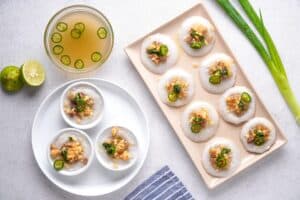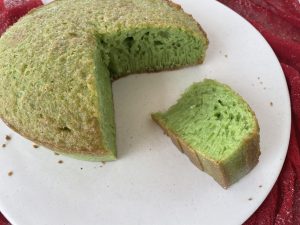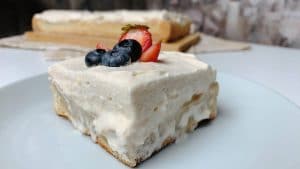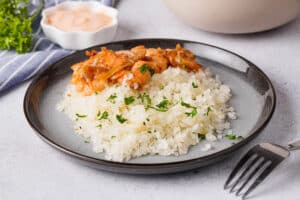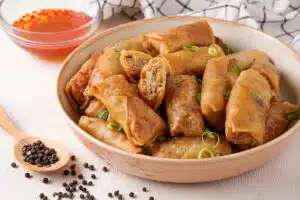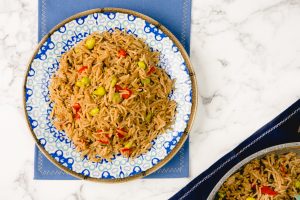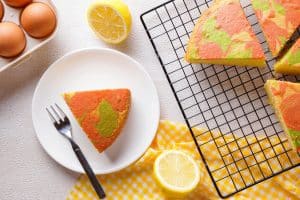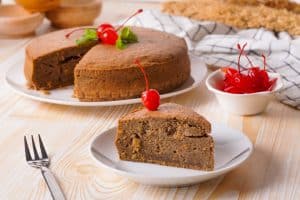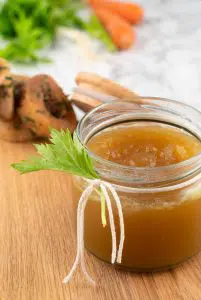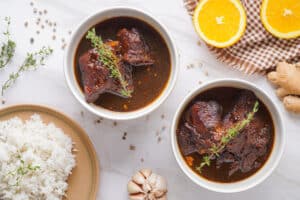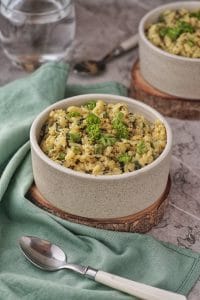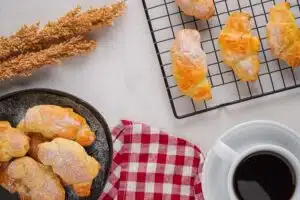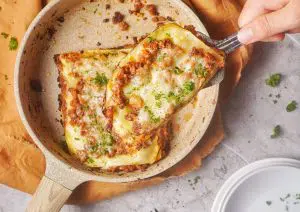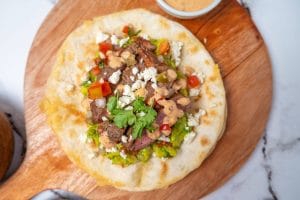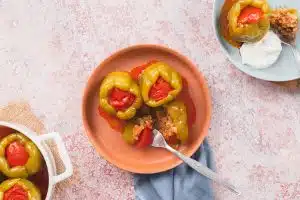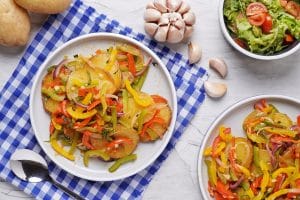Simple Vietnamese Sticky Rice Cake
Important Note: When you buy through our links, we may earn a commission. As an Amazon Associate we earn from qualifying purchases. Content, pricing, offers and availability are subject to change at any time - more info.
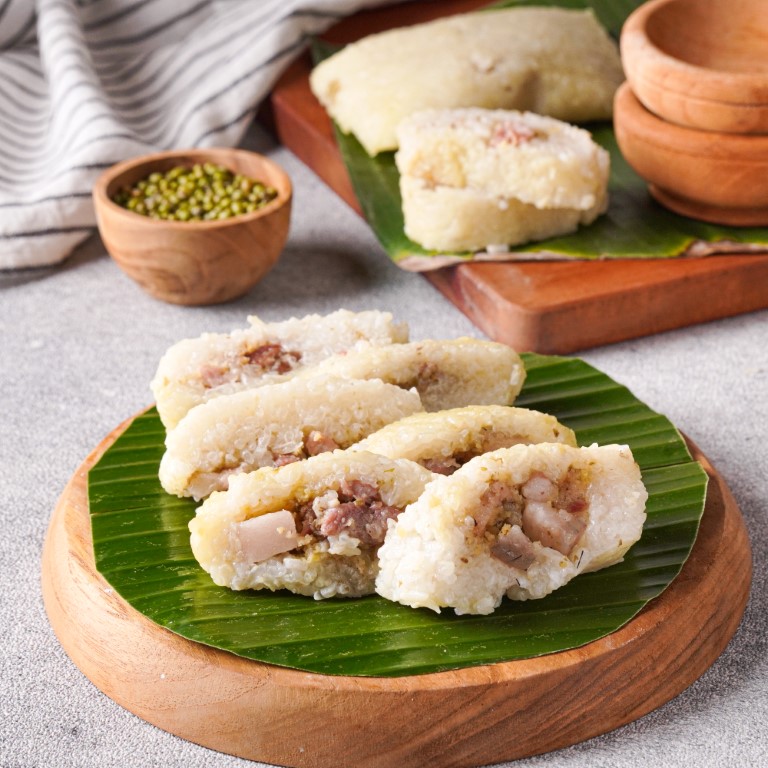
Ingredients
- 2 cups glutinous rice
- ½ pound pork belly cut into small pieces
- ½ cup dried mung beans soaked in water for 2 hours
- 1 tsp. salt
- 1 tsp. sugar
- ¼ tsp. black pepper
- 1 Tbsp. fish sauce
- 4-5 banana leaves cleaned and cut into 8-inch squares
- Cooking twine
Instructions
- Rinse the glutinous rice in cold water and soak for at least 4 hours or overnight.
- Drain the mung beans and blend them into a fine paste.
- In a mixing bowl, combine the pork belly, mung bean paste, salt, sugar, black pepper, and fish sauce. Mix well and set aside.
- Drain the glutinous rice and mix it with 1 teaspoon of salt.
- Take a square piece of banana leaf and lay it flat on a clean surface. Place a layer of glutinous rice on top of the leaf, followed by a layer of the pork and mung bean mixture. Cover the mixture with another layer of glutinous rice.
- Fold the edges of the banana leaf over the rice to make a neat square-shaped package. Use cooking twine to tie the package tightly.
- Repeat steps 5-6 with the remaining ingredients until you have 4-5 rice cakes.
- Place the rice cakes in a large pot and fill the pot with enough water to cover the cakes. Bring to a boil, then reduce the heat to low and simmer for 6-8 hours.
- Remove the rice cakes from the pot and let them cool. Remove the banana leaves and cut the cakes into slices. Enjoy!
Nutrition
Vietnamese sticky rice cake, or banh chung, is a savory cake made from glutinous rice, pork belly, and mung bean paste, all wrapped tightly in banana leaves or la dong and steamed for several hours. It´s a traditional Vietnamese dish often enjoyed during the Lunar New Year, also known as Tet.
Banh chung has a long history in Vietnamese culture, dating back to ancient times when prince Lang Liêu, son of the last king of the Sixth Hung Dynasty, became the successor. They crowned him thanks to his creation of bánh chưng and bánh giầy, which are said to represent the earth and sky, respectively.
You may be wondering; how can sticky rice cakes make you a king? Legend says the king had to find a way to choose a successor among his many sons. To make it fair, he decided to organize a competition to see who could bring him the most delicious and symbolic dish to offer ancestors during Tet.
Unlike his brothers, Lang Lieu wasn’t wealthy. So, while some of the princes traveled far and wide in search of the finest ingredients from the forests and seas, Lang Lieu had to make do with what he had. He took everyday ingredients, such as rice and pork, and shaped them into beautiful cakes.
Lang Lieu’s sticky rice cakes or bahn chung and bánh giầy are respectively square to represent the earth, and round to represent the sky. Needless to say, his father found his creations both delicious and significantly symbolic.
Since Lang Lieu was crowned king and the Seventh Hung dynasty rained, Vietnamese sticky rice cakes have become an essential dish during Tet. What a delicious history lesson, right?
Why You’ll Love This Vietnamese Sticky Rice Cake Recipe
Banh chung is a classic Vietnamese dish with a rich history and cultural significance. By making the recipe, you get to imagine that you’re the soon-to-be king of the Seventh Hung dynasty.
The combination of glutinous rice, pork belly, and mung bean paste creates a delicious dance between sweet and savory flavors. And the leaves bring color and a special taste to the sticky rice cakes.
This recipe is a fun and unique cooking experience, as you get to wrap the ingredients in banana leaves and steam them. It’s a time-consuming process, but the result is worth it. Vietnamese steamed rice cakes have an unrepeated texture and flavor.
What Do I Need For This Bahn Chung Recipe?
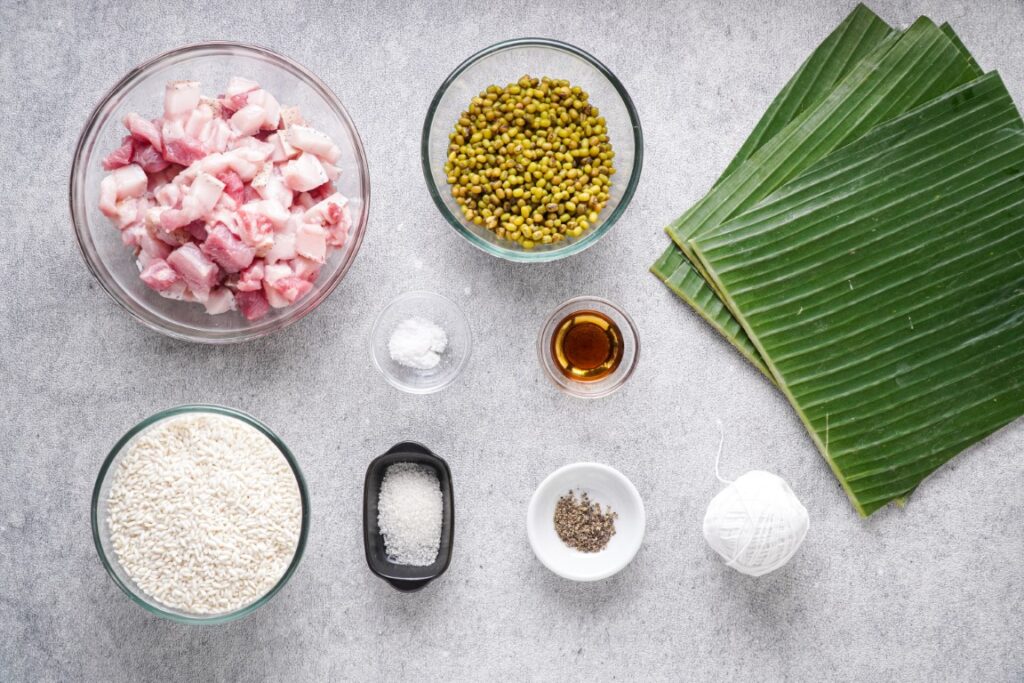
All you need are a few simple ingredients to make Vietnamese sticky rice cakes:
- 2 cups glutinous rice (also called sticky rice or sweet rice)
- 1/2 pound pork belly, cut into small pieces
- 1/2 cup dried mung beans, soaked in water for 2 hours
- 1 tsp. salt
- 1 tsp. sugar
- 1/4 tsp. black pepper
- 1 Tbsp. fish sauce
- 4-5 banana leaves, cleaned and cut into 8-inch squares
- Cooking twine
How To Make Vietnamese Sticky Rice Cakes Bahn Chung
Step 1: Prepare the ingredients
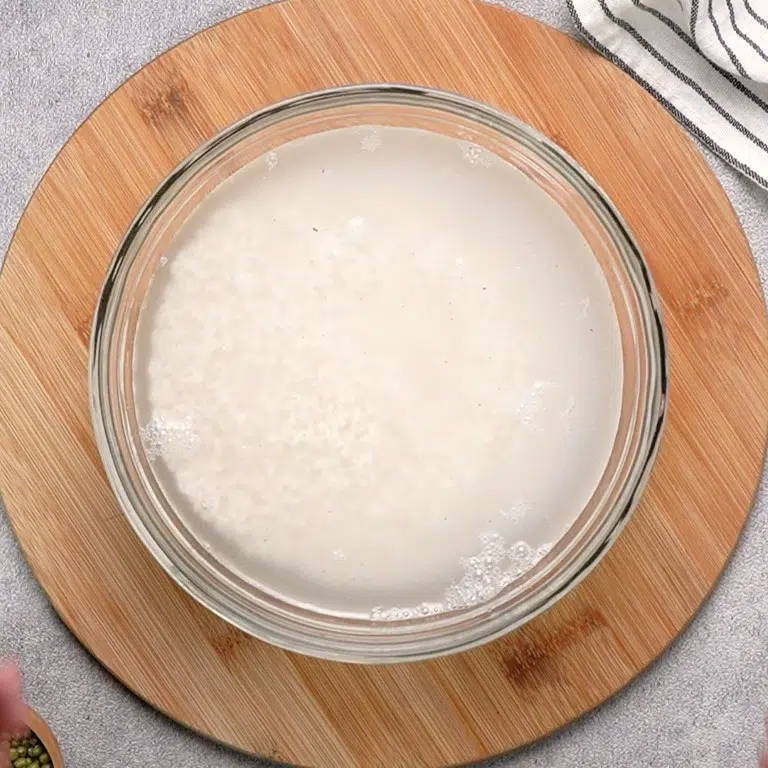
Rinse the glutinous rice in cold water and soak for at least 4 hours or overnight.
Step 2: Blend Soaked Mung Beans into Paste
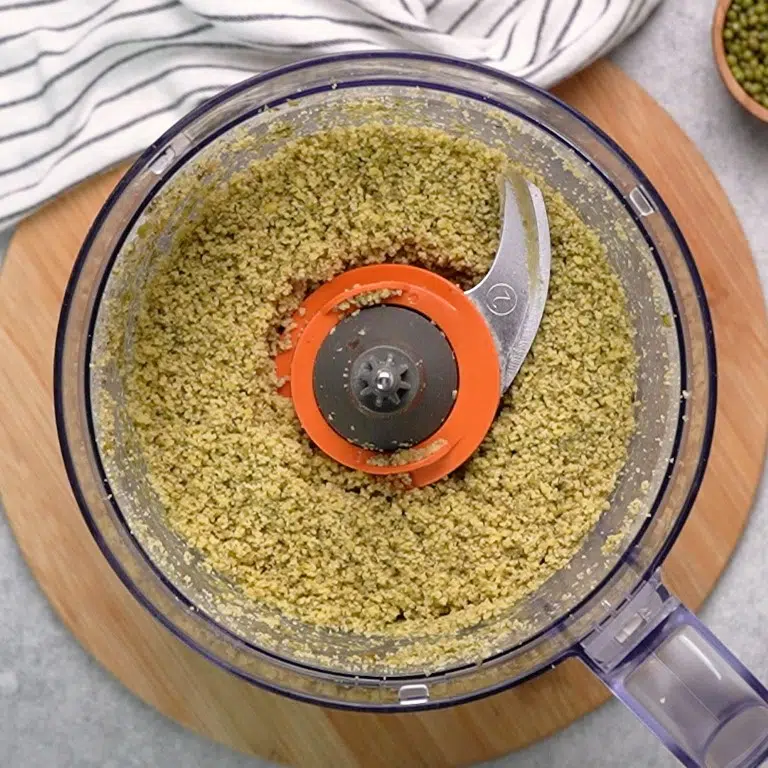
Drain the mung beans and blend them in a food processor or blender until they become a fine paste.
Step 3: Combine Pork Belly with Mung Bean Paste and Seasonings
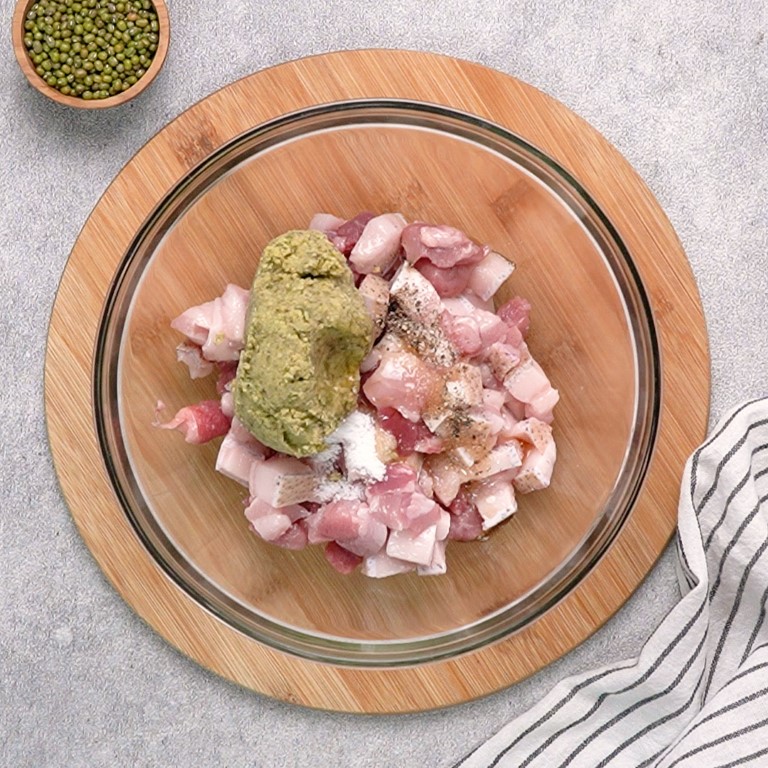
In a mixing bowl, combine the pork belly, mung bean paste, salt, sugar, black pepper, and fish sauce. Mix well and set aside.
Step 4: Mix Glutinous Rice with Salt
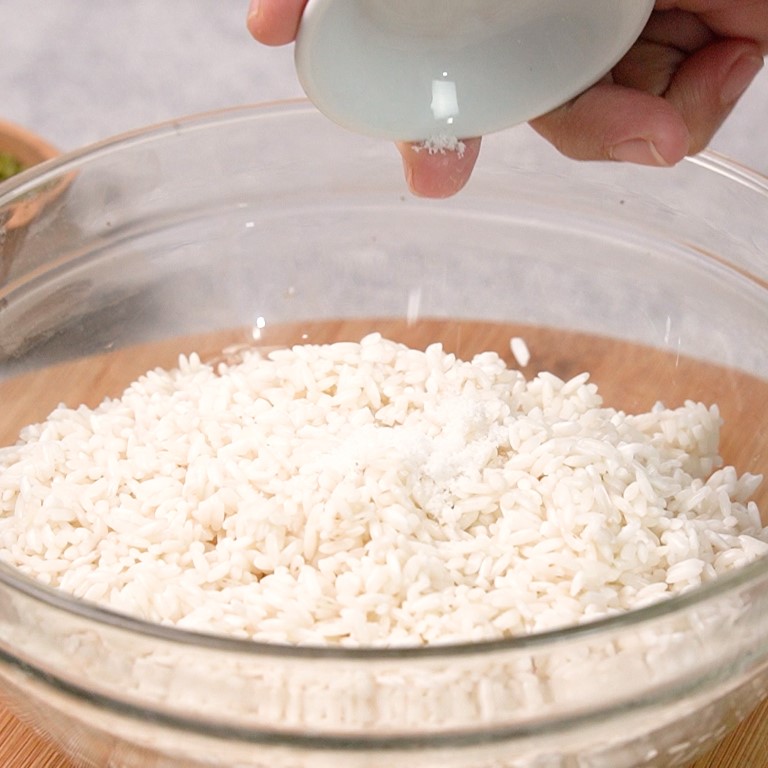
Drain the glutinous rice and mix it with 1 teaspoon of salt.
Step 5: Wrap the filling in banana leaves
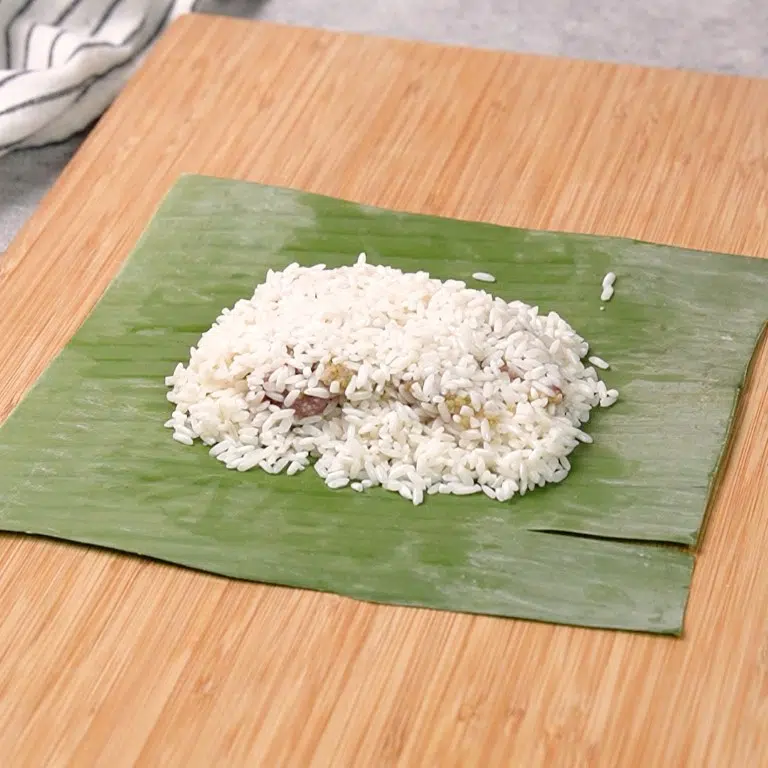
Take a square piece of banana leaf and lay it flat on a clean surface. Place a layer of glutinous rice on top of the leaf, followed by a layer of the pork and mung bean mixture.
Step 6: Wrap Rice in Banana Leaf and Tie with Twine
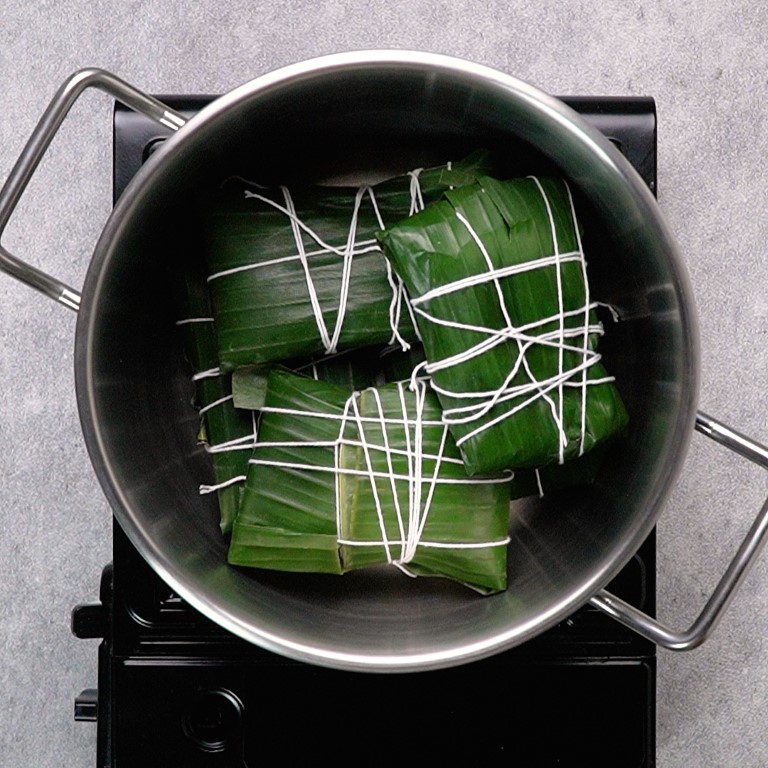
Cover the mixture with another layer of glutinous rice. Fold the edges of the banana leaf over the rice to make a neat square-shaped package. Use cooking twine to tie the package tightly.
Repeat step 2 until you have 4-5 rice cakes.
Step 7: Simmer the sticky rice cakes
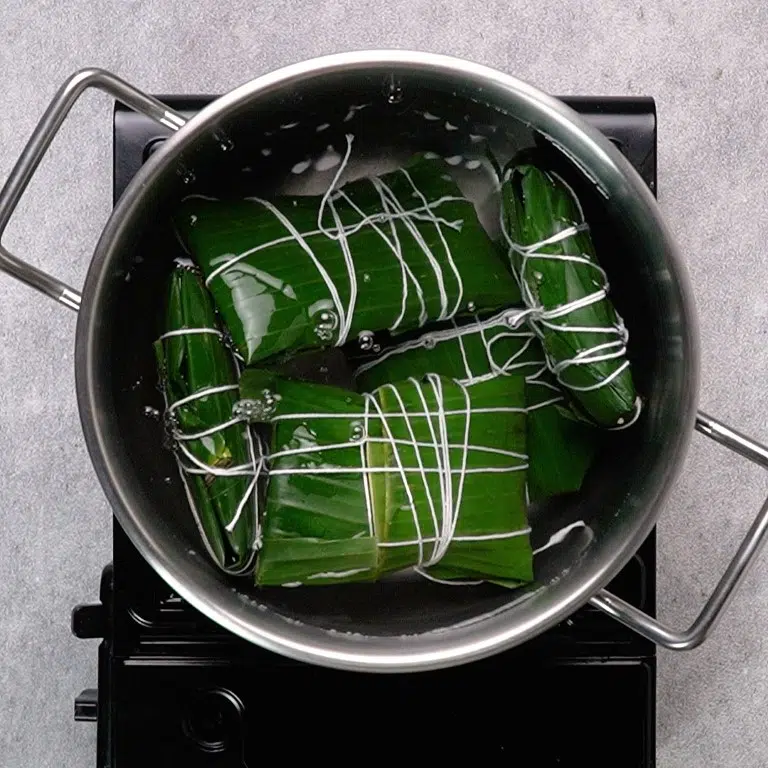
Place the rice cakes in a large pot and fill the pot with enough water to cover the cakes. Bring to a boil, then reduce the heat to low and simmer for 6-8 hours, adding more water as needed to keep the cakes submerged.
Step 8: Enjoy your Simple Vietnamese Sticky Rice Cake
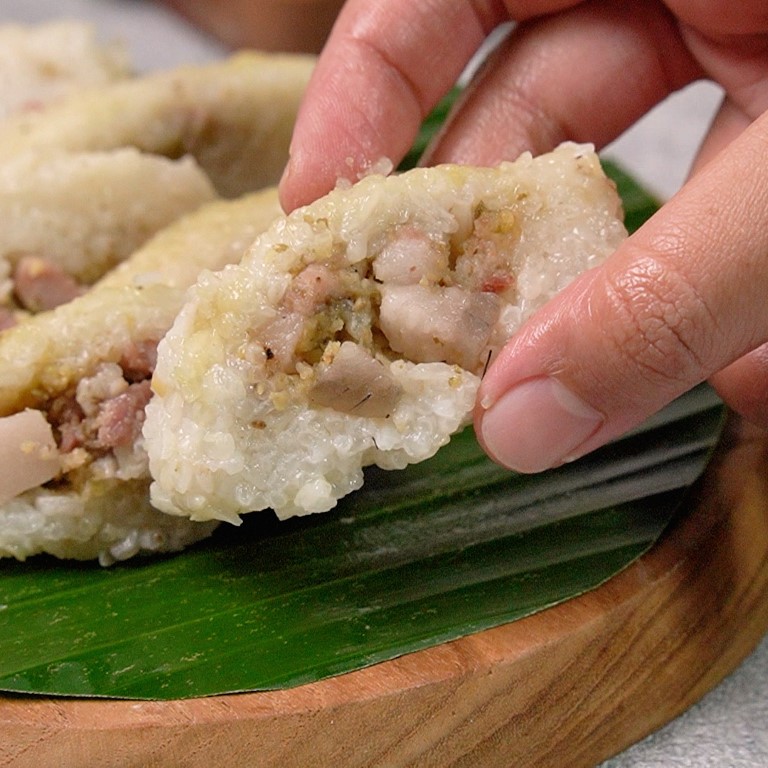
Remove the rice cakes from the pot and let them cool. Remove the banana leaves and cut the cakes into slices. Enjoy warm or at room temperature, both are great!
Notes & Tips
- Make sure to soak the glutinous rice for at least 4 hours before using it in the recipe. This will help the rice to become soft and sticky.
- It’s important to tie the banana leaves tightly with cooking twine to ensure that the rice cakes don’t fall apart during cooking. You don’t want the water to penetrate the cakes either.
- Don’t forget to add more water while the sticky rice cakes simmer. They should be covered at all times.
- You can store leftover banh chung in the refrigerator for up to 5 days. Reheat in the microwave or steamer before serving.
- To add extra texture and increase the flavor, try frying bahn chung after they’ve cooled down or if you have any leftovers. The crispy layer combined with the gooey interior is so satisfying.
Variations & Substitutions
There are variations of bahn chung for vegetarians and Buddhists which do not contain pork. These include bahn chung chay (vegetarian chung cake) and banh chung ngot (sweet chung cake) which are filled with molasses or brown sugar.
In some regions of Vietnam, bahn chung is shaped into a cylinder instead of a square. Both variations can be cut into pieces and fried before serving.
In the countryside, poor families used to make a variation of bahn chung using cardamom, black pepper, and cooked mung beans instead of pork. The cakes were then dipped in molasses.
With a little imagination, banh chung can be made with different fillings, such as green beans or chestnuts, depending on personal preference. Vegetarians can substitute the pork belly with mushrooms or tofu to keep it savory.
How To Eat Bahn Chung
Vietnamese sticky rice cake (banh chung) is traditionally eaten during the Lunar New Year celebrations. To eat it, the cake is usually cut into small pieces and served as a savory snack or meal.
Some people like to dip the cake in fish sauce or eat it with pickled vegetables for added flavor.
It can also be served with a variety of other dishes, such as boiled chicken, fried pork, or pickled mustard greens. Overall, it’s a versatile dish that can be enjoyed in many different ways.
How To Make Vietnamese Sticky Rice Cake Without Leaves
Although wrapping the bahn chung in leaves is an essential part of the process, there’s a hack I came across that uses parchment paper.
To make Vietnamese sticky rice cakes without leaves, simply wrap them in a double sheet of parchment paper (like a burrito). Tie them with cooking twine and simmer them for 6-8 hours (or 2 hours if using a pressure cooker).
Once your sticky rice cake burritos are steamed, unwrap them and use the cooking twine to cut them into rounds. You can enjoy them as is or fry them in a pan with some oil for extra yummy points.
If you want the bahn chung without leaves to still have that green hue, use spinach water to cook the rice. Blend some spinach with water in a food processor and then strain it into the glutinous rice. Just like that!
Are Sticky Rice Cakes Healthy?
Sticky rice is a high-carbohydrate food that can cause spikes in blood sugar levels, and the addition of pork and sometimes fatty pork belly in banh chung can contribute to its high calorie and fat content.
However, banh chung is also a good source of protein and fiber from mung beans and pork filling.
Like with all foods, moderation is key when it comes to enjoying banh chung. It can be a satisfying and nourishing part of a balanced diet when consumed in appropriate portions.

